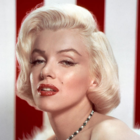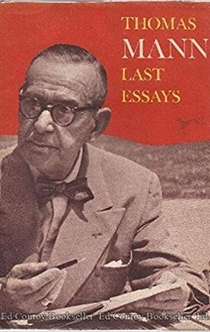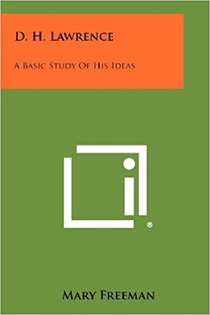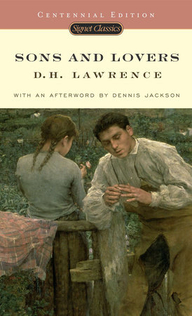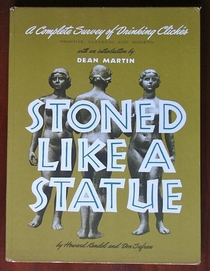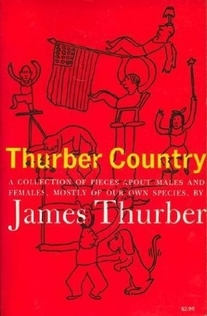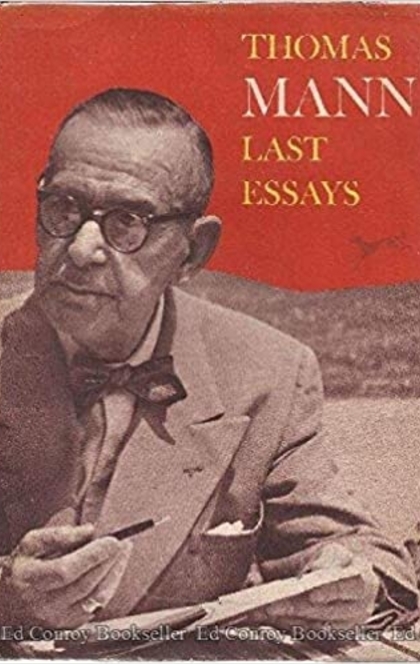
Marilyn Monroe Library - 25 Favorite Books
Marilyn Monroe
Marilyn Monroe was an avid reader. Her library was immense and we selected 25 of the books she had in her collection.
See all
0
likes
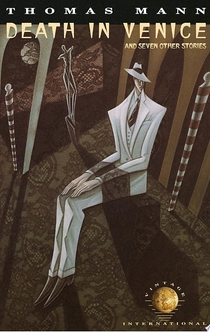
Death in Venice
Eight complex stories illustrative of the author's belief that "a story must tell itself," highlighted by the high art style of the famous title novella.
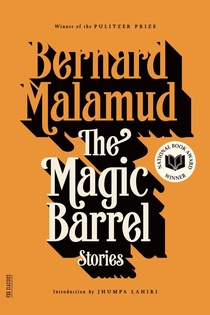
The Magic Barrel
A matchmaker finds love for a would-be rabbi; a shopkeeper dies because he cannot afford a doctor; a little girl steals candy; an angel visits a grieving tailor. Through Malamud's great gifts as a writer - humour and profound concern for the matter of human life - he transmutes the particular struggles of everyday sufferers into a strange poetry.
See all

The Assistant
Time magazine's 'All-Time list of 100 Novels'Frank Alpine, a drifter fleeing from his past, runs straight into struggling Brooklyn grocer Morris Bober. Seeing a chance to atone for past sins, Frank becomes Bober's assistant and keeps shop when the owner takes ill. But it is Bober's daughter, Helen, who gives Frank a real reason to stay around, even as he begins to steal from the store.Widely considered as one of the great American-Jewish novels, The Assistant is a classic look at the social and racial divides of a country still in its infancy, and a stunning evocation of the immigrant experience - of cramped circumstances and great expectations.
See all
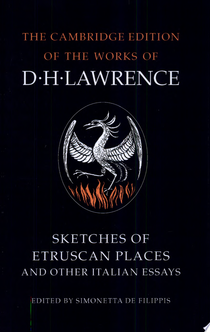
Sketches of Etruscan Places and Other Italian Essays
Sketches of Etruscan Places contains seven essays D. H. Lawrence wrote in 1927 after visiting several Etruscan cities in central Italy. Six were published posthumously in 1932 as Etruscan Places; 'The Florence Museum' is published for the first time here. Some appeared in magazines in Lawrence's lifetime, but he expressed a wish that they be published in a volume with the photographs he had collected; in fact, only twenty of the forty-five illustrations here reproduced with Lawrence's own captions were included in 1932. Eight essays about Florence and the Tuscan countryside form the second part of this volume. The texts have been established by checking manuscripts, typescripts, proofs and periodical and book publications. The introduction gives the genesis, publication, textual history and reception of the essays.
See all
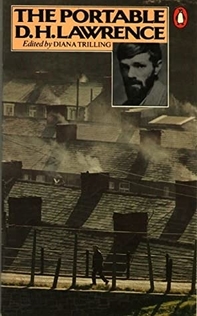
The Portable D. H. Lawrence
EIGHT STORIES AND NOVELETTES, INCLUDING 'THE PRUSSIAN OFFICER', 'THE ROCKING -HORSE WINNER', AND 'THE FOX'. SELF CONTAINED SECTIONS FROM 'THE RAINBOW' AND 'WOMEN IN LOVE', POEMS, TRAVEL WRITINGS, LETTERS, ESSAYS, CRITICISM
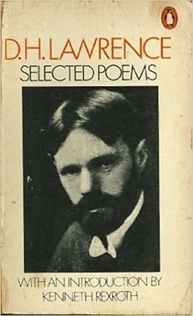
Selected Poems
From early, rhyming work in Love Poems and Others (1913) to the groundbreaking exploration of free verse in Birds, Beast and Flowers (1923), the poems of D.H Lawrence challenged convention and inspired later poets. This voloume includes extensive selections from these and other editions, and contains some of his most famous poems, such as 'Piano', a nostalgic reflection on lost youth and love for his mother; ' Snake' , exploring human fear of the natural world; the short, cutting commment of sexual politics of 'Can't be Borne'; and the quiet philosophical resignation of 'Basta!'. Using the revised poems, but in the order in which they appear in their original collections, this selection offers a fresh perspective that revals an innovative poet who gave voice to his most intense emotions. In his introduction, James Fenton dicusses the early publication and critical reception of Lawrence's poems, his develpoments as a poet and his use of free verse. This edition also includes a chronology, further reading and appendices, including Lawrence's comments on the work of Walt Whitman.
See all

On the Road
On the Road chronicles Jack Kerouac's years traveling the North American continent with his friend Neal Cassady, "a sideburned hero of the snowy West." As "Sal Paradise" and "Dean Moriarty," the two roam the country in a quest for self-knowledge and experience. Kerouac's love of America, his compassion for humanity, and his sense of language as jazz combine to make On the Road an inspirational work of lasting importance. Kerouac's classic novel of freedom and longing defined what it meant to be “Beat” and has inspired every generation since its initial publication more than forty years ago. @Didn'tTypeOnTP! For TWITTERATURE of On the Road by Jack Kerouac, please see On the Road by Jack Kerouac. From Twitterature: The World's Greatest Books in Twenty Tweets or Less
See all

The Last Temptation of Christ
The internationally renowned novel about the life and death of Jesus Christ.Hailed as a masterpiece by critics worldwide, The Last Temptation of Christ is a monumental reinterpretation of the Gospels that brilliantly fleshes out Christ’s Passion. This literary rendering of the life of Jesus Christ has courted controversy since its publication by depicting a Christ far more human than the one seen in the Bible. He is a figure who is gloriously divine but earthy and human, a man like any other—subject to fear, doubt, and pain. In elegant, thoughtful prose Nikos Kazantzakis, one of the greats of modern literature, follows this Jesus as he struggles to live out God’s will for him, powerfully suggesting that it was Christ’s ultimate triumph over his flawed humanity, when he gave up the temptation to run from the cross and willingly laid down his life for mankind, that truly made him the venerable redeemer of men. “Spiritual dynamite.” —San Francisco Chronicle “A searing, soaring, shocking novel.” —Time
See all

Ulysses
Regarded today as one of the greatest novels of the twentieth century, Ulysses entered the world in a firestorm of controversy. Denounced as obscure, unintelligible, nonsensical, and obscene, it was first published in Paris in 1922 and remained banned in the United States until 1933. Among the innovations that shocked and outraged critics were Joyce's revolutionary use of the interior monologue (better known as "stream of consciousness") and other experimental narrative techniques. Ulysses draws upon a complex network of symbolic parallels from mythology, history, and literature (including a framework and episodes that echo the Odyssey) to document an ordinary day in the lives of three Dubliners.
See all

The Prophet
'The Prophet', by Kahlil Gibran (1883 - 1931) is a book composed of twenty-six poetic essays. Continually in print since its publication in 1923, its ongoing popularity is a continuation of the interest generated by the American counterculture of the 1960s and the New Age movement. His language has a breath-taking beauty. Before returning to his birthplace, Almustafa, the 'prophet', is asked for guidance by the people of Orphalese. His words, redolent with love and understanding, call for universal unity, and affirm Gibran's certainty of the correlated nature of all existence, and of reincarnation. 'The Prophet' has never lost its immediate appeal and has become a ubiquitous touchstone of spiritual literature. AUTHOR: Born in the town of Bsharri in the north of modern-day Lebanon (then part of Mount Lebanon Mutasarrifate, Ottoman Empire), as a young man he immigrated with his family to the United States, where he studied art and began his literary career, writing in both English and Arabic. In the Arab world, Gibran is regarded as a literary and political rebel. His romantic style was at the heart of a renaissance in modern Arabic literature, especially prose poetry, breaking away from the classical school. In Lebanon, he is still celebrated as a literary hero. He is chiefly known in the English-speaking world for his 1923 book 'The Prophet', an early example of inspirational fiction including a series of philosophical essays written in poetic English prose. The book sold well despite a cool critical reception, gaining popularity in the 1930s and again especially in the 1960s counterculture. Gibran is the third best-selling poet of all time, behind Shakespeare and Laozi.
See all

The Art of Loving
The landmark bestseller that changed the way we think about love: “Every line is packed with common sense, compassion, and realism” (Fortune). The Art of Loving is a rich and detailed guide to love—an achievement reached through maturity, practice, concentration, and courage. In the decades since the book’s release, its words and lessons continue to resonate. Erich Fromm, a celebrated psychoanalyst and social psychologist, clearly and sincerely encourages the development of our capacity for and understanding of love in all of its facets. He discusses the familiar yet misunderstood romantic love, the all-encompassing brotherly love, spiritual love, and many more. A challenge to traditional Western notions of love, The Art of Loving is a modern classic about taking care of ourselves through relationships with others by the New York Times–bestselling author of To Have or To Be? and Escape from Freedom. This ebook features an illustrated biography of Erich Fromm including rare images and never-before-seen documents from the author’s estate.
See all

From Russia with Love
SMERSH, the Russian intelligence unit, is hell-bent on destroying Special Agent James Bond. His death would deal a hammer blow to the heart of The British Secret Service. The lure? The chance for 007 to bring the Spektor decoding machine from Istanbul to London, and for the British to take the upper hand in a chilling new front of the Cold War.So begins a deadly game of bluff and double bluff, with Bond a marked man as he enters the murky world of Balkan espionage.
See all

The Great Gatsby (Unabridged)
This carefully crafted ebook: " The Great Gatsby (Unabridged)" is formatted for your eReader with a functional and detailed table of contents. "The Great Gatsby" is a novel by the American author F. Scott Fitzgerald. The story takes place in 1922, during the Roaring Twenties, a time of prosperity in the United States after World War I. The book received critical acclaim and is generally considered Fitzgerald's best work. It is also widely regarded as a "Great American Novel" and a literary classic, capturing the essence of an era. The Modern Library named it the second best English language novel of the 20th century. The novel takes place following the First World War. American society enjoyed prosperity during the "roaring" 1920s as the economy soared. At the same time, Prohibition, the ban on the sale and manufacture of alcohol as mandated by the Eighteenth Amendment, made millionaires out of bootleggers...
See all

Original 1896 Boston Cooking-School Cook Book
Considered the "greatest American cookbook, " Fannie Merritt Farmer's "Boston Cooking-School Cook Book, " published over a century ago, was acclaimed for a number of innovations. It was the first to use timers now considered standard in American cooking (e.g. a level cupful, teaspoonful and tablespoonful); it relied on simple directions and showed a hitherto neglected concern for nutrition. Novices as well as practiced cooks of the period were treated to a vast amount of information that left nothing to the user's imagination - from instructions for building a fire to how to bone a bird.
See all

Camille
Alexandre Dumas, pre (French for "father," akin to Senior in English), born Dumas Davy de la Pailleterie (1802-1870) was a French writer, best known for his numerous historical novels of high adventure which have made him one of the most widely read French authors in the world. Many of his novels, including The Count of Monte Cristo (1845), The Three Musketeers (1844), and The Man in the Iron Mask (1848) were serialized, and he also wrote plays and magazine articles and was a prolific correspondent. Though best known now as a novelist, He earned his first fame as a dramatist. His Henri III et sa Cour (1829) was the first of the great Romantic historical dramas produced on the Paris stage, preceding Victor Hugo's more famous Hernani (1830). He was also a wellknown travel writer, writing such books as From Paris to Cadiz (1847), and Travel Impressions: In Russia (1860). His other works include Twenty Years After (1845), The Two Dianas (1846), Queen Margot (1845), The Black Tulip (1850), The Wolf-Leader (1857), and The Knight of Sainte-Hermine (1869).
See all

The Fall
Elegantly styled, Camus' profoundly disturbing novel of a Parisian lawyer's confessions is a searing study of modern amorality.
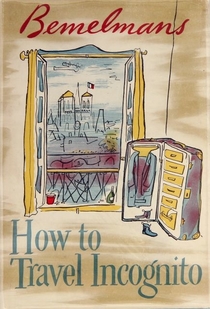
How to Travel Incognito
Monsieur Le Comte de St Cucuface, a charismatic aristocrat fallen on hard times, slums his way around postwar France in elegant style, trading on his name and his exquisite manners. After a chance encounter on a train, he convinces a wide-eyed Ludwig Bemelmans to adopt the identity of an imaginary German prince and join him in his ruse. Together they set out on an enchanted adventure through a France that is crumbling to dust, feeding off the comically vulgar continental set that is fast replacing Cucuface's blue-blooded caste. They dine on the finest food and wine, stay at the most splendid hotels and chateaux, pausing only for Cucuface to recount another amusing tale of his eccentric lineage. Mixing autobiography and fiction to magical effect, How to Travel Incognito is an affectionate and melancholic hymn to the passing of an ancient order.
See all
